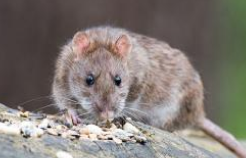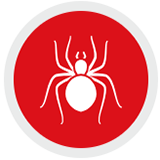In today’s world, homeowners and businesses alike are looking for smarter, more sustainable ways to tackle pest control. Integrated Pest Management (IPM) offers a comprehensive and environmentally sensitive solution that not only targets pests but does so with minimal impact on human health, property, and the surrounding ecosystem. As one of the most effective strategies in modern pest control, IPM emphasizes prevention, monitoring, and control methods that reduce the need for harmful chemicals.
This blog will cover the principles of IPM, how it works in residential and commercial settings, and why it’s quickly becoming the preferred method for pest management around the world.
What is Integrated Pest Management (IPM)?
Integrated Pest Management (IPM) is a science-based, decision-making process that combines multiple strategies to control pests effectively. It focuses on long-term prevention and sustainable control methods. As defined by the USDA, IPM involves biological, cultural, physical, and chemical tools to minimize risks to people and the environment.

The Office of Pest Management Policy describes IPM as a strategy that promotes the development of pest management solutions to reduce economic, environmental, and public health risks. By understanding the life cycles of pests and their interaction with the environment, IPM allows for targeted interventions that are effective and sustainable.
Want to dive deeper into the principles? Check out USDA’s IPM Principles for more detailed information on how IPM programs work, from setting action thresholds to prevention and control strategies.
The Core Principles of IPM
IPM is built on four key principles that make it both effective and eco-friendly:
- Identification of Pests
Not all insects and organisms require control. Some pests are harmless, and others might even be beneficial. By accurately identifying the pest, IPM ensures that control measures are only applied when absolutely necessary. - Prevention
Prevention is a critical component of IPM. This involves addressing the underlying causes of pest problems, such as food and water sources or access points into a building. Preventive measures may include sealing cracks, improving sanitation, and managing moisture levels. - Monitoring
Regular monitoring allows for early detection of pests and helps determine when action is needed. This prevents the overuse of pesticides and allows for targeted control methods. Monitoring is especially important for larger infestations or in agricultural settings where continuous observation is required. - Control
Once pests are detected, the least harmful control methods are used first. These may include physical barriers, traps, or biological controls such as introducing natural predators. Chemical methods are used only as a last resort and are applied in a way that minimizes risk.
These principles ensure that IPM is a sustainable pest management system, focused on reducing pesticide use and long-term environmental impacts.
How IPM Differs from Traditional Pest Control
While traditional pest control often relies on the routine application of chemicals to eliminate pests, IPM takes a more holistic and environmentally friendly approach. The goal of IPM is to manage pests in a way that is both effective and minimizes harm to people, pets, and the planet.
For example, in organic farming, pesticides are limited to those produced from natural sources, whereas IPM includes a broader range of solutions, only using synthetic chemicals when necessary. This makes IPM more adaptable across different environments, including agriculture, residential settings, and even public spaces like schools and parks.
Explore more about how Eco-Friendly Pest Control aligns with these principles to protect your home and the environment.
Why Homeowners and Businesses Should Choose IPM
- Long-Term Effectiveness
IPM provides a long-term solution by focusing on prevention and early intervention. Instead of simply addressing the symptoms of a pest infestation, IPM tackles the root cause, preventing future infestations. - Safety for Family and Pets
One of the greatest advantages of IPM is that it minimizes chemical use, making it safer for families and pets. By relying on non-toxic treatments, IPM ensures that harmful chemicals are only used as a last resort. - Environmentally Responsible
IPM emphasizes sustainability by using methods that reduce environmental impacts. This includes biological controls, natural repellents, and habitat modifications to create less favorable conditions for pests. This approach not only helps preserve beneficial organisms but also reduces pollution. - Cost-Effective
By focusing on prevention and early detection, IPM often leads to lower costs over time. Fewer treatments are needed, and the emphasis on prevention means fewer infestations will occur.
Curious about how IPM can benefit your home? Read about our seasonal pest control services to see how these strategies work throughout the year.
Implementing IPM in Your Garden
IPM is not limited to professional pest control services; it can be applied to home gardens and landscapes as well. By following the core principles—prevention, monitoring, and targeted control—gardeners can minimize pesticide use while keeping pests in check. This includes using physical barriers, rotating crops, and introducing beneficial insects like ladybugs to control harmful pests.
For more information on applying IPM in your garden, check out this guide on USDA’s website, which provides a detailed roadmap for implementing IPM at home.
The Future of Pest Control
As concerns about environmental health and sustainability grow, IPM is becoming the standard for pest control across industries. The National Road Map for Integrated Pest Management, led by the USDA, aims to expand the adoption of IPM practices in agriculture, public spaces, and residential settings. The roadmap emphasizes new strategies for pest management that reduce risks and promote long-term sustainability.
How We Implement IPM at Eastside Exterminators
At Eastside Exterminators, our approach to Integrated Pest Management is rooted in our commitment to providing safe and effective pest control solutions. Here’s what you can expect when you choose our IPM services:
- Thorough Inspection: We start by conducting a detailed inspection to identify potential pest issues and the conditions contributing to them.
- Customized Plan: Based on our findings, we create a customized IPM plan that includes preventive measures, ongoing monitoring, and targeted treatments.
- Eco-Friendly Treatments: When treatments are needed, we prioritize the use of natural, non-toxic solutions that are safe for your home and the environment.
- Ongoing Support: We provide regular updates and inspections to ensure the plan is working effectively and make any necessary adjustments.
If you’re ready to take a more sustainable approach to pest control, explore our pest control services and let us create a tailored IPM plan that works for you.
By choosing Integrated Pest Management, you’re not only protecting your home or business but also contributing to a healthier environment. If you’re ready to make the switch to a more sustainable, effective, and eco-friendly pest control solution, reach out to us at Eastside Exterminators to learn more about our IPM-based services.

 (425) 318-7912
(425) 318-7912
 MY ACCOUNT
MY ACCOUNT
 425-318-7912
425-318-7912








